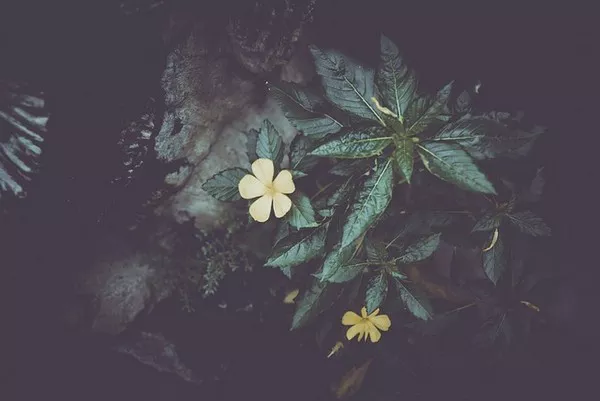Flowers have long been admired for their beauty and symbolic significance. However, not all flowers are safe for our canine companions. As responsible dog owners, it is essential to be aware of the potential risks associated with certain flowers, as dogs are known to explore their surroundings with their noses and mouths. This article aims to provide a comprehensive guide to flowers that are toxic to dogs, ensuring the safety and well-being of our four-legged friends.
The Importance of Awareness
Before diving into the specific flowers that pose a risk to dogs, it is crucial to understand why floral toxicity is a significant concern for pet owners. Dogs are naturally curious animals and may consume plants and flowers out of curiosity or boredom. Unfortunately, many beautiful blooms contain compounds that can be harmful or even deadly to dogs.
When a dog ingests a toxic flower, it can lead to a range of adverse effects, from mild gastrointestinal upset to severe symptoms such as organ failure or neurological issues. Early recognition and prompt action are vital in cases of floral toxicity to ensure the best possible outcome for our furry friends.
Common Toxic Flowers
1. Lilies (Lilium spp.)
Lilies are exceptionally toxic to dogs, particularly Easter lilies (Lilium longiflorum), Tiger lilies (Lilium lancifolium), and Asiatic lilies (Lilium asiatic). Ingesting even small amounts of these flowers can lead to kidney failure in dogs. Early symptoms include vomiting, lethargy, and loss of appetite, which can progress rapidly.
2. Tulips (Tulipa spp.)
Tulips contain glycosides, which can cause gastrointestinal distress and, in some cases, cardiac abnormalities if ingested by dogs. Symptoms may include drooling, vomiting, diarrhea, and increased heart rate.
3. Daffodils (Narcissus spp.)
Daffodils contain toxic alkaloids, such as lycorine, which can cause symptoms like vomiting, diarrhea, abdominal pain, and heart irregularities if consumed by dogs.
4. Azaleas and Rhododendrons (Rhododendron spp.)
Both Azaleas and Rhododendrons are highly toxic to dogs. Ingesting even a small part of these plants can cause symptoms like drooling, vomiting, diarrhea, weakness, and, in severe cases, coma and death.
5. Sago Palm (Cycas revoluta)
The Sago Palm is a popular ornamental plant that is extremely toxic to dogs. All parts of the plant, especially the seeds, contain cycasin, a potent toxin that affects the liver, leading to severe liver failure.
6. Oleander (Nerium oleander)
Oleander is a beautiful but highly toxic flowering shrub. All parts of the plant, including the flowers, leaves, and stems, contain cardiac glycosides, which can cause life-threatening heart issues if ingested by dogs.
7. Lily of the Valley (Convallaria majalis)
Lily of the Valley contains cardiac glycosides, which can cause vomiting, diarrhea, heart abnormalities, and potential seizures if dogs consume it.
8. Chrysanthemums (Chrysanthemum spp.)
Chrysanthemums, often known as mums, contain pyrethrins, which can cause symptoms like drooling, vomiting, diarrhea, and skin irritation if ingested or if there is skin contact.
Less Common Toxic Flowers
In addition to the above commonly encountered toxic flowers, there are several other lesser-known plants that can pose a risk to dogs. Some of these include:
1. Autumn Crocus (Colchicum autumnale)
Autumn crocus contains colchicine, a compound that can lead to severe gastrointestinal and kidney issues if ingested by dogs.
2. Hyacinths (Hyacinthus orientalis)
Hyacinths contain similar toxins as tulips and can cause gastrointestinal distress, drooling, and cardiac abnormalities if ingested by dogs.
3. Morning Glory (Ipomoea spp.)
Morning Glory seeds can cause symptoms such as gastrointestinal upset, agitation, tremors, and, in severe cases, hallucinations if ingested by dogs.
4. Foxglove (Digitalis purpurea)
Foxglove contains cardiac glycosides, which can cause heart problems, vomiting, diarrhea, and potential seizures if ingested by dogs.
5. Yew (Taxus spp.)
The Yew plant, including its bright red berries, contains taxine alkaloids, which can cause severe symptoms like tremors, difficulty breathing, and cardiac issues if ingested by dogs.
Preventing Floral Toxicity in Dogs
Preventing floral toxicity in dogs primarily involves awareness and proactive measures. Here are some tips to help keep your canine companion safe:
1. Know Your Plants
Familiarize yourself with the toxic plants in your surroundings, especially in your garden or areas where your dog spends time. Remove any toxic plants and flowers from your home and yard to eliminate the risk of accidental ingestion.
2. Supervise Outdoor Time
Supervise your dog’s outdoor activities, especially during walks and visits to parks. This will prevent them from nibbling on unknown plants.
3. Be Cautious with Bouquets
Be cautious with floral bouquets and arrangements brought into your home. Ensure that any flowers you display are non-toxic to dogs.
4. Seek Immediate Veterinary Care
If you suspect your dog has ingested a toxic flower, seek immediate veterinary care. Do not wait for symptoms to worsen, as quick action can significantly improve the chances of a positive outcome.
Conclusion
As dog owners, it is our responsibility to create a safe environment for our beloved pets. Familiarizing ourselves with the flowers that pose a risk to dogs is a crucial step in ensuring their well-being. By being proactive, removing toxic plants, and promptly seeking veterinary care in case of ingestion, we can keep our canine companions safe from the hazards of floral toxicity and enjoy their company for many healthy years to come.


